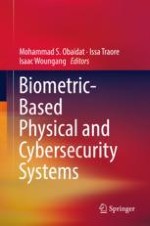2019 | OriginalPaper | Buchkapitel
8. Continuous Authentication Using Writing Style
verfasst von : Marcelo Luiz Brocardo, Issa Traore, Isaac Woungang
Erschienen in: Biometric-Based Physical and Cybersecurity Systems
Aktivieren Sie unsere intelligente Suche, um passende Fachinhalte oder Patente zu finden.
Wählen Sie Textabschnitte aus um mit Künstlicher Intelligenz passenden Patente zu finden. powered by
Markieren Sie Textabschnitte, um KI-gestützt weitere passende Inhalte zu finden. powered by
